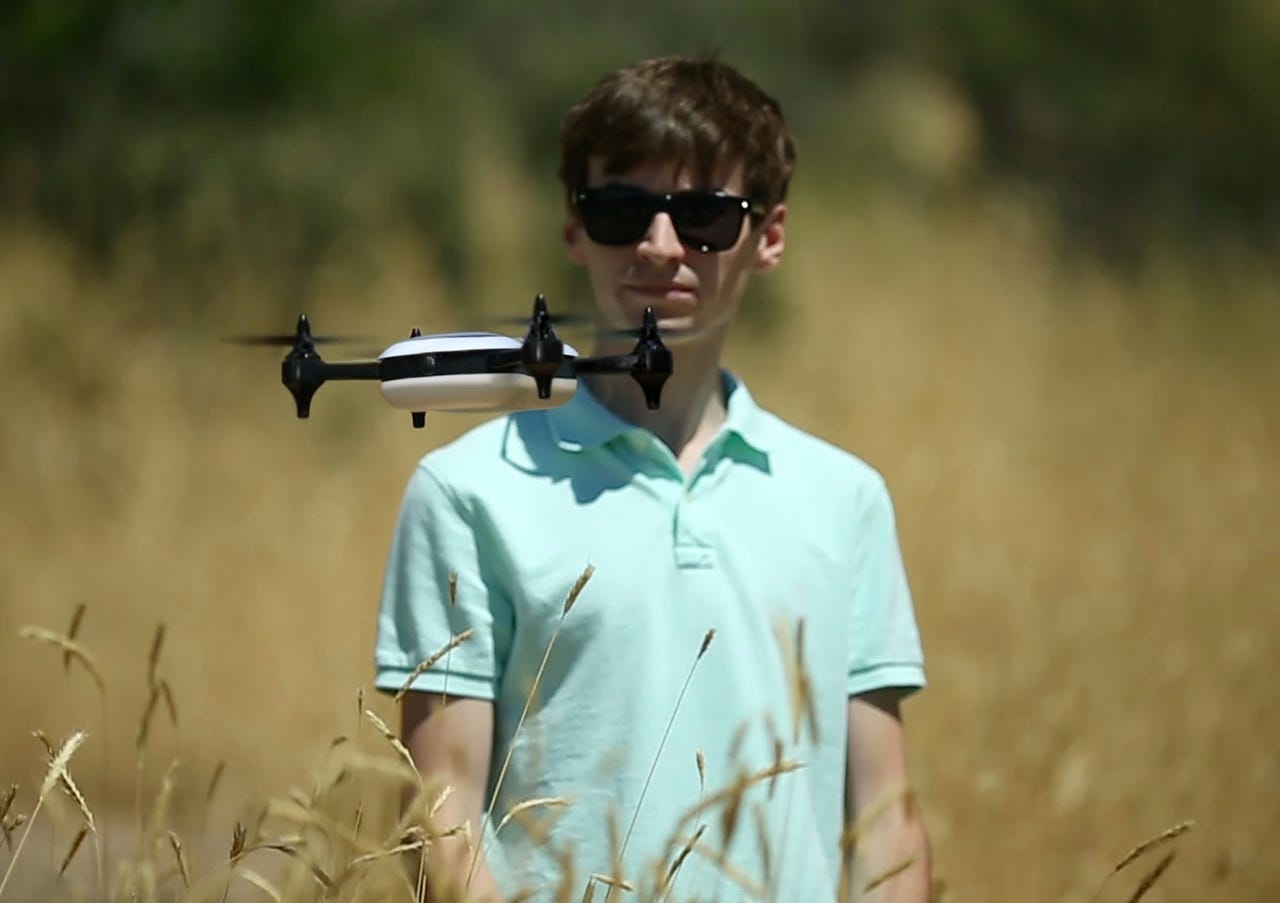Utah teen launches consumer drone that can fly over 70 mph


Teal founder and CEO George Matus Jr. believes we've only seen five percent of what drones can do.
A new drone company called Teal came out of stealth mode on Wednesday, offering preorders of a consumer drone that can fly at racing speeds straight of the box.
When he was 11 years old, the company's founder and CEO, George Matus Jr., started flying drones in a field behind his Utah home. At 12, he became a test pilot for a drone company, where he honed his technical skills. Soon, he started modifying drones, developing apps, and competing in races and hackathons. At 16, he decided it was time to start his own company.
In an interview with ZDNet, he said "I was able to fly all the products on the market and learn about the technology, and throughout that time, I built this wish list of everything that I would want in a drone if I were to professionally build one of my own."
CES 2023
While he was tinkering in his high school robotics lab, George earned a $100,00 fellowship from the Thiel Foundation, which PayPal co-founder Peter Thiel started to encourage young innovators to skip or postpone college so they could focus on becoming entrepreneurs.
At 17, George -- still sporting a full set of braces -- had his dad give him a ride to meet with investors, since he didn't have his driver's license yet. He quickly raised $2.8 million in funding to launch Teal.
"After spending an hour with George, I was overwhelmingly impressed by his vision for a drone platform as well as his presence as an entrepreneur," wrote Ben Lambert, from Pelion Venture Partners, in a post on Medium. George clearly has an engineering mindset, but he's also a savvy businessman. When he was a kid (which wasn't that long ago, after all), he always had lemonade stands or some other way to make a few bucks. "I was always an entrepreneur at heart," he told me.
In these early days, Teal has been operating out of Pelion's Salt Lake City office. George says he's managing to stay grounded while handling large responsibility at such a young age with the support from his family and school, but he also mentioned "half-jokingly" that spending quality time with his investors has helped. "Ben tells me every day that I suck," George said.
Teal can fly over 70 mph, which is double the maximum speed of typical consumer drones. Racing drones can hit 50 mph, and DIY drones (including some that George has built) can reach higher speeds, but this is the fastest drone to be offered to the mass market.
Hardcore drone enthusiasts will be able to fly Teal year-round, because it is built to withstand just about any weather condition, including rain, snow, hail, and even 40 mph winds. A built-in Inertial Navigation system provides GPS and sensors that ensure controlled flight performance and accuracy.
Teal can fly over 70 mph, which is double the maximum speed of typical consumer drones.
Newbies shouldn't be intimidated by the powerful drone, since it has an optional beginner setting that lets the drone fly 20 feet in the air with a virtual bubble that prevents users from smashing their new drones into trees or other objects.
The drone's camera supports 4K video recording and 3-axis electronic stabilization. Teal is powered by Nvidia TX1, a mini supercomputer that can handle machine learning, autonomous flight, and image recognition. There are a couple of downsides: the high performance battery only lasts 10 minutes, and at this time, there is no integrated obstacle avoidance.
Users only need their smartphones to get started. Teal is launching with three basic apps:
- Command and Control: A basic flight-and-control app that gets the user flying. It has an Inertial Navigation System, speed and pitch governing, geofencing, and the "beginner bubble" feature.
- FollowMe: An app that allows you to have the drone follow a specific person or object based on advanced image recognition software, which was originally developed by Boston-based Neurala for NASA and the US Air Force.
- Racing: This app will allow racers to log flights, challenges, awards, and rank up through leader boards.
It was important to George to launch an SDK and open API so that developers can build unlimited apps for anything from gaming and augmented reality to commercial uses like inspections and agricultural monitoring. He explained:
Even though it's geared toward consumers, what we're able to do is take it to commercial, start building apps for it, and because it has this incredible capability built in -- the supercomputer, the inertia navigation system, the modularity, and upgradability -- it can be used for something like search and rescue. Somebody can send a swarm of these, and with machine learning, it can autonomously find a human and distinguish them versus a rock or a tree and alert somebody.
George believes we've only seen five percent of what drones can do. He predicted that in the next few years we'll continue to see more commercial drone use, plus a gamification of drones, with more racing and augmented reality similar to Pokemon Go that will continue the trend of taking video games outdoors.
"Drones will become as ubiquitous as a smartphone," he said. "They'll be smaller, more powerful, and less intrusive."
Preorders from Teal's website start July 20, for $1,299, with plans to ship before Christmas. The first 500 people to order Teal will get the Signature Series, which come with a free Endurance Package that doubles the battery life, plus one rather unusual perk for extra support: the CEO's direct phone number.